PinotFile: 9.48 October 6, 2014
|
Grapevine Red Blotch Disease Threatens Pinot Noir & Other GrapesAs vintners recover from a harried, compact 2014 harvest, and concern themselves with the vestiges of a continuing drought, there is apprehension about a new threat. An aggressive virus producing Grapevine Red Blotch Disease (GRBV) is now widespread in California vineyards of the North Coast, Central Coast and San Joaquin Valley of California. The virus, a member of the geminivirus family, Geminiviridae, carries the proposed name GRBaV, or “Grapevine Red Blotch-Associated Virus,” to describe its association with the grapevine and red blotch disease. Jim Wolpert, a UC Davis-based Cooperative Extension viticulturist and Mike Anderson, a UC Davis viticulture researcher, first discovered the disease in 2008 at UC Davis’ Oakville Experiment Station in Napa Valley. Cabernet Sauvignon vines grown there showed leaf changes that resembled those caused by leafroll virus, but the vines tested negative for that virus. The GRBaV virus has probably been present in California vines before this discovery, but its similarity to grapevine leafroll disease delayed identification of the disease. Currently, a lack of education, the confusion with leafroll, the possible emergence of a more virulent strain of GRBaV, and the failure to institute practices to curtail it, have led to the spread of GRBV. According to the University of California Integrated Viticulture site at www.iv.ucdavis.edu/viticultural_information, symptoms of red blotch disease appear in late August through September as irregular blotches on leaf blades on the basal portions of shoots. The changes resemble leafroll disease, but the leaf margins in GRBV do not roll downward, and the leaf veins in GRBV turn partly or fully red while leafroll has green veins. The photos below are from a report titled Red Blotch-Research Status by Deborah Fravel of the USDA Agricultural Research Service: www.ngwi.org/files/documents/Presentations_May2014/D_Fravel_52214.pdf. The top two photos are of GRBV in Pinot Noir and the bottom photo compares GRBV to leafroll.
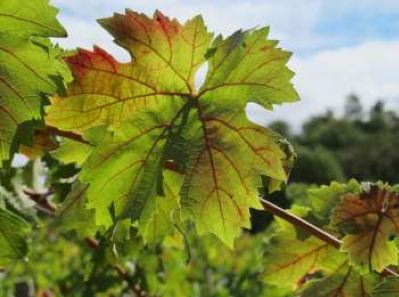
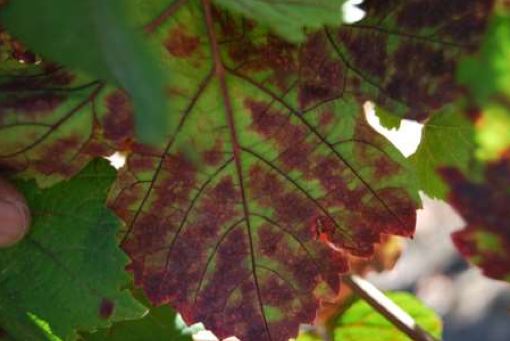
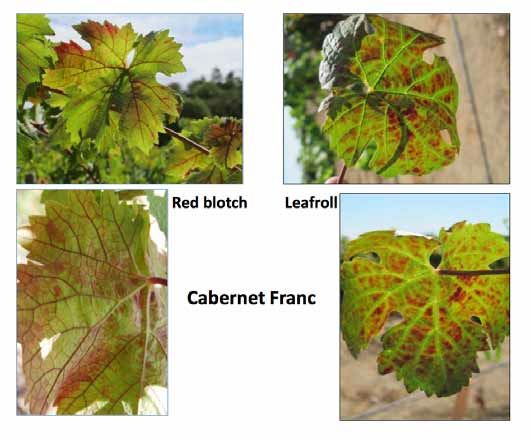 The DNA virus, GRBaV, was identified by Maher Al Rwahnih, a researcher at UC Davis Foundation Plant Services (FPS), an expert in DNA sequencing technology, and Mysore Sudarshana, a U.S. Department of Agriculture researcher in the UC Davis plant pathology department in 2012, and confirmed subsequently by others. Rwahnih and cohorts published a report on GRBaV in Phytopathology: www.apsjournals.apsnet.org/ doi/abs/10.1094/PHYTO-10-12-0253-R. A DNA-based polmerase chain reaction (PCR) assay has been developed to detect it in any tissue of the vine - leaf, petiole, clusters, or dormant canes at any time of the year.The virus is discoverable before the onset of symptoms in the affected grapevine. The transmission methods of red blotch disease are not clearly defined although it appears that GRBaV can be spread by grafting and propagation, and a possible vector, the Virginia creeper leafhopper, has been identified. There are conflicting reports on spread in vineyards by pruning and harvesting, and some growers have already resorted to sterilizing pruning shears with bleach between each cut as well as sanitizing other mechanical equipment. If such a step in pruning, hedging and harvesting proves to be necessary, the cost of farming grapevines could easily double. The effects of GRBD are much more devastating than leafroll. Sugar levels in grapes grown on vines affected by Red Blotch can suffer a Brix reduction of up to 4º to 6º, much more than is seen with leafroll-diseased grapevines. In addition, ripening is delayed, color is reduced in red grapes and wines, and phenolics are disturbed. In essence, once a grapevine is infected and symptoms appear, the grapevine cannot produce commercially useful grapes. There are also conflicting reports on the effect of GRBD on the longevity of vines, but the threat of rapid spread of the disease within a vineyard and the consequences make this determination almost irrelevant. There are some reports that vine death is accelerated. Cornell plant virologist, Dr. Marc Fuchs, is at the forefront of GRBD research. In late 2013, he conducted a Red Blotch speaking tour of Northern California and his UC Davis seminar can be found on the University of California UC Integrated Viticulture website at www.iv.ucdavis.edu/?uid=284&ds=351. A March 27, 2013 webinar is also available on Red Blotch. GRBD does not discriminate, affecting many red grape varieties including Pinot Noir, as well as white grape varieties and even table grapes. The symptoms can be more challenging to identify in white grape leaves such as the example show below from a Riesling vine (photo also from Deborah Fravel report cited above).
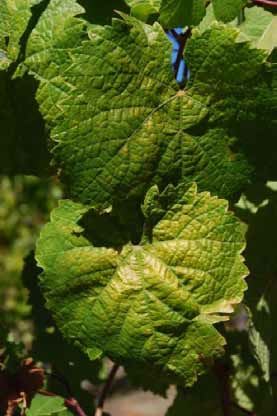 There is currently no cure for GRBD. Dr. Fuchs recommends that symptomatic vines be tagged in the fall and removed during the dormant season when insect activity is very low or absent. If greater than 25% of vineyard is affected, the entire vineyard should be replaced - a scary thought for winegrowers. Some vineyards in the North Coast have already been torched following this last harvest. At UC Davis FPS, GRBaV has not been detected at the new Russell Ranch Foundation Vineyard, and there has been a low incidence discovered at the Classic Foundation Vineyard. It is interesting to speculate that the 3-year drought and other climate changes have contributed to the emergence of a more aggressive or at least opportunistic GRBaV virus. We know that grapevines as well as all plants have disease resistance mechanisms (some of which are also common in animal and human immune systems) that allow the plant to tolerate certain viruses within and show little disease damage from those pathogens. The interaction of the plant, a pathogen and the environmental conditions is known as the disease triangle. A significant change in the environment can tip the scale in favor of a pathogen and disease damage may appear. I asked noted winegrower and winemaker, Ted Lemon, to comment on my speculative thoughts. “There is no doubt that viruses can remain dormant in grapevines for many years. And, like humans, I would expect that stress, including drought, could favor expression of the virus. As for the mechanism(s) that induce expression, that is a million dollar question.” Ted went on to talk about virus detection and management in grapevines in general. “From a viticultural point of view, most of our leading researchers and government agencies take the approach of somehow trying to ‘guarantee’ that plant material will be virus free. They have been singing this siren song for decades. Our plant material has never been virus free. It is clearer than ever that most of the nursery sources and FPS are full of virus.” This comment relates directly to GRBaV since it has been found that micro-shoot tip cultures work effectively in only 25% of Red Blotch-infected grapevines. Clearly, Ted advocates “more systems and ecological research, and less emphasis on cutting edge virology research.” In summary, Ted concludes, “Our goal for people and plants ought not to try to make them virus and disease free, but to create vibrant, healthy ecosystems (be they on the farm or in the home) where balance prevents disease associated with virus expression. In the case of humans, the moral question pushes us to try to insure that no one suffers from virus-induced disease and we err on the side of too much medicine. In the plant world, we can more easily accept the risk that a percentage of plants fail if this creates better health in the overall population.”
Thanks to vintner Claude Koeberle of Soliste Wines for piquing my interest in this subject and providing references.
Recent Sips of Pinot Noir
2013 Alta Maria Carbonic Santa Maria Valley Pinot Noir 13.0% alc., $24. A Cru Beaujolais style Pinot Noir made with 100% carbonic maceration of whole cluster grapes without crushing or pumping over the free draining juice and bottled 4 months after harvest. · Light garnet color in the glass. A little funky upon opening, cleaning up over time in the glass to reveal aromas of red berries, red cherry, spice, candied ginger and rose petal. Light and bright flavors of strawberry, cranberry and red cherry with no detectable tannins. Drinks like a substantial rosé and like a rosé, should have some chill on it. Score: 86
2012 Alta Maria Bien Nacido Vineyard Santa Maria Valley Pinot Noir 14.0% alc., $52. First Bien Nacido bottling in 6 years. Sourced from 40-year-old, own-rooted vines which are some of the first planted in the Santa Maria Valley. 100% whole cluster fermented. Aged 17 months in French oak. · Moderately light reddish purple color in the glass. Appealing aromas of cherry and red berry with a hint of oak. Light to medium weight flavors of red and dark red fruits with an herbal, earthy underpinning. The tannins are well integrated, and the wine finishes with plenty of dried cherry goodness and a cut of good acidity. Oak plays a supportive role. A little reserved at this stage, needing at least another year in the cellar. Score: 89-90
Anaba Wines Anaba!s name comes from the cool anabatic winds that swirl through the winery!s sustainably farmed Carneros estate vineyards. These unique air currents make the vineyards more temperate, slowing down the ripening process. In 2009, Anaba Wines became the first winery in Northern California to use wind power when owner John Sweazey installed a wind turbine on the property to harness the anabatic winds. The turbine generates electricity for Anaba!s tasting room, wine storage, office operations and irrigation pumps for the two estate vineyards. Jennifer Marion, a UC Davis graduate, has been the Director of Winemaking and Vineyard Operations and General Manager since the winery!s first releases in 2009. Her 2012 releases are outstanding and the best showing for this winery to date. Check out the excellent Chardonnays as well later in this issue. For more information, visit the website at www.anabawines.com.
2012 Anaba Dutton Ranch Russian River Valley Pinot Noir 14.3% alc., pH 3.56, TA 0.56, 192 cases, $46. This vineyard is located in one of Russian River Valley’s coolest and foggiest regions. Goldridge soil. Clones 115 and Pommard. Harvest Brix 23.9º-24.2º. 12% whole cluster, 4 to 6-day cold soak, native fermentation, basket pressed when dry. Aged 11 months sur lees in 35% new French oak. · Moderately light reddish purple color in the glass. The nose is closed initially showing little more than aroma of coffee bean. When tasted the following day from a previously opened and re-corked bottle, the nose had blossomed, offering pleasing aromas of cherry, spice and rose petal. On the palate, the wine has a welcoming softness and freshness with juicy flavors of Bing cherries, ripe strawberries, spice, cola and complimentary oak framed by fine-grain tannins. A charming wine with soaring aromatic persistence on the extended finish. Decant if you pull the cork now. Score: 90
2012 Anaba Sonoma Coast Pinot Noir 14.3% alc., pH 3.51, TA 0.56, 1,576 cases, $34. A blend of select lots from Roberts Road, Dutton Ranch, Las Brisas and Tina Marie vineyards. Clones 115, Pommard, 667 and 777. Harvest Brix 22.9º-24.2º. 12% whole cluster, 4 to 6-day cold soak, native fermentation, basket pressed when dry. Aged 11 months sur lees in 40% new French oak. · Moderately light reddish purple hue in the glass. Pleasant aromas of cherry, pomegranate and toasty oak which gain in appeal over time in the glass. Full-bodied, rich flavors of cherry, blueberry, and raspberry underpinned with spicy oak. The balance of sinewy tannins and acidity is spot on and there is some finishing length. A solid, dependable offering year in and year out. Score: 89
2012 Anaba Roberts Road Vineyard Sonoma Coast Pinot Noir 14.3% alc., pH 3.52, TA 0.56, 201 cases, $46. This vineyard is located at the base of Sonoma Mountain adjacent Copeland Creek and is farmed by the noted Sangiacomo family. Clone 115 and Pommard. Harvest Brix 23.5º. 12% whole cluster, 4 to 6-day cold soak, native fermentation, basket pressed when dry. Aged 11 months sur lees in 35% new French oak. · Moderately light reddish purple hue in the glass. This is a spicy wine with appealing aromas and flavors of black raspberry and black cherry. Some oak is at play creating hints of cocoa, vanilla and anise. The fruit veers a bit to the ripe side but is very fresh, juicy and luscious. Still very flavorful the following day from a previously opened and re-corked bottle with an impressively long finish. Score: 91
2012 Anaba Las Brisas Vineyard Carneros Pinot Noir 14.3% alc., pH 3.45, TA 0.525, 127 cases, $38. This vineyard is part of the Mahoney Estate and the name translates to “breezes.” The winds drive morning fog from the vineyards and cool the vines in the late afternoon. Swan and 667. Harvest Brix 23.2º-24.0º. 15% whole cluster, 5-day cold soak, native fermentation, basket pressed when dry. Aged 11 months sur lees in 33% new French oak. · Moderate reddish purple hue in the glass. Pleasant aromas of cherry, strawberry and a subtle note of green herbs. Light to mid weight flavors of red cherry and cranberry fruit with a hint of cocoa and oak are marked by a brisk tug of acidity and slightly grippy tannins. A bit of heat shows up on the red fruit fueled finish. Score: 88
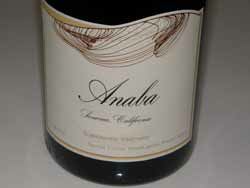 2012 Anaba Soberanes Vineyard Santa Lucia Highlands Pinot Noir 14.5% alc., pH 3.45, TA 0.52, 213 cases, $46. Pisoni selection. Harvest Brix 24.1º. 12% whole cluster, 4 to 6-day cold soak, native fermentation, basket pressed when dry. Aged 11 months sur lees in 40% new French oak. · Moderately light reddish-purple color in the glass. Nicely perfumed with fresh aromas of cherry, cardamom spice and cocoa. A polished wine with impeccable balance, featuring a burst of spicy black cherry flavor on the mid palate. Forward drinking with juicy acidity, a silky texture and some notable finishing power. This wine brings out the best in Santa Lucia Highlands Pinot Noir. Score: 92
2012 Bethel Heights Vineyards ÆOLIAN Estate Eola-Amity Hills Pinot Noir 13.7% alc., pH 3.42, TA 0.60, 2,390 cases, $42. This bottling is from the second generation of vines on the estate, planted in the 1990s. Harvest Brix 23.9º. Aged 11 months in 40% new French oak. Unfined. · Moderate reddish purple color in the glass. Shy aromas of blackberry, black raspberry, spice and balsam lead to a mid weight core of sappy blueberry, pomegranate and black raspberry fruits framed by modest dry tannins. A vein of racy acidity adds energetic tension, and the raspberry-driven finish is remarkably persistent and refreshing. Very accessible now, but time in the cellar will bring the aromatics to life. Score: 90
2012 Castle Rock Mendocino County Pinot Noir 13.5% alc., $10-$12. · Moderate reddish purple color in the glass. Dark fruited on the nose with significant smoky oak overlay. Fruity and pleasant, with flavors of black cherry, black raspberry and plum. Soft in the mouth with supple tannins. An unpretentious, every day style of Pinot Noir. Score: 86
2012 Cherry Tart California Pinot Noir 14.3% alc., $20, screwcap. Vinified by Jason Woodbridge (Hundred Acre, Layer Cake and Cherry Pie). 49% Sonoma County, 43% Monterey County and 8% Santa Barbara County. Aged in 3-year-old French oak with a small portion of new oak (barrels recycled from Hundred Acre and Cherry Pie program). First vintage of this wine. · Moderately light reddish purple color in the glass. The nose is smoky with underlying aromas of black cherry, burnt toast and black tea. The black cherry, black raspberry and black currant flavors deliver plenty of Pinot goodness. A mantle of smoky oak shadows the fruit. The tannins are well balanced and the wine finishes with some appealing black cherry fruit. Score: 88
2012 Domaine Drouhin Oregon Dundee Hills Pinot Noir 14.1% alc., $38. This wine was previously reviewed in February 2014, and I noted then that the wine would benefit from further aging. This tasting confirms my prediction and the wine is showing considerably better. · Moderate reddish purple color in the glass. Pleasant aromas of dark cherry liquor, strawberry and spice. Mid to full-bodied and very tasty on the attack with waves of black cherry and black raspberry fruit that engage the consumer with sappy hedonism. The tannins are well matched to the generous fruit load, and there is enough acidity to add tension. The fruit really hangs on to the generous finish. This is a bigger, riper and more concentrated bottling than usual but most will embrace the Caliesque style for its glorious fruit. Score: 91
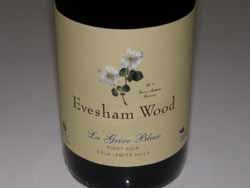 2012 Evesham Wood La Grive Bleue Eola-Amity Hills Pinot Noir 13.0% alc., $25. This wine pays homage to the Western Bluebird, preservation of whose habitat was a prime motivation for the winery’s decision to farm the estate Le Puits Sec Vineyard organically. Non-irrigated vines. Unfiltered. · Moderately light reddish purple hue in the glass. Intoxicating aromas of fresh cherry pie and rose petals. Delicious core of red cherry, red raspberry fruit flavors accented with notes of spice and floral goodness. Soft, silky and suave on the palate with supple tannins and appealing harmony. Amazing phenolic ripeness and flavor at this low ABV. Very special. Score: 94
Founder and winemaker David Rossi sources grapes from California!s cool Pinot Noir regions, most notably the Sonoma Coast, Anderson Valley and the Chalone AVA. Beyond this, David seeks out more sheltered, sun-kissed sites that are a bit warmer than their neighbors. He says, “Because they are somewhat warmer sites, we get the flavors we want, but because they are in cool growing regions, the flavors are balanced by the poise and restraint we love.” Regarding the On Point and Fulcrum wines, David says, “As I evaluate each barrel, some will be darker, have more pronounced tannins and more complex structures. These become Fulcrum wines. Others will be more vibrant, with softer tannins and the immediately alluring personality that defines On Point.” For more information, visit www.fulcrumwines.com.
2012 On Point Sonoma Coast Pinot Noir 14.0% alc., pH 3.67, TA 0.56, 253 cases, $36. A blend of four clones (115, 667, 777 and Pommard) from Gap’s Crown (35%) and Sangiacomo (65%) vineyards. Aged 16 months in 30% new French oak. · Moderately dark reddish purple color in the glass. Ripe fruited, with aromas and flavors of blackberry jam, black currant, plum reduction sauce and dried cherry. Notes of anise and spice add interest. A fruit-dominated wine that is discreetly concentrated with soft tannins and easy drink ability. Score: 87
2012 Fulcrum Anderson Valley Pinot Noir 14.1% alc., pH 3.69, TA 0.62, 117 cases, $55. Sourced from Donnelly Creek Vineyard, a vineyard planted in 1991 that is farmed by owner Mary Elke. Aged 16 months in 33% new French oak. · Moderate reddish purple color in the glass. Pleasant aromas of fresh berry jam, black cherry and sous bois. The mix of dark red and purple fruits on the palate has good mid palate presence, the oak is well integrated, and there is some persistence on the dry, slightly tannic finish. The wine seemed to lose a little appeal 24 hours later, so I would drink it in the near term. Score: 89
 2012 Fulcrum Gap’s Crown Vineyard Sonoma Coast Pinot Noir 14.2% alc., pH 3.65, TA 0.57, 172 cases, $59. Planted in 2002, this is one of the Sonoma Coast’s preeminent vineyards. It is located on the western hillside of Sonoma Mountain in the Petaluma Gap. · Moderate reddish purple color in the glass. Enticing aromas of dark red berries and cherries, blueberries and baking spices. Engaging and harmonious, with a charge of chocolate-covered cherries flooding the mouth with pleasure. The vivid fruit is perfectly ripened and accented with an array of spices. Beautifully crafted, this wine is silky in the mouth, and ends with a glorious, black cherry-laden, peacock tail finish. Still highly aromatic and flavorful the following day from a previously opened and re-corked bottle. Score: 94
2012 Fulcrum Brousseau Vineyard Chalone AVA Pinot Noir 14.1% alc., pH 3.67, TA 0.61, 148 cases, $55. This unique site has limestone soils. Third vintage from this vineyard. Aged 16 months in 33% new French oak. · Distinctly darker in color with a deep purple tone. The nose is rich with aromas of blackberry jam, ollaliberry, spice and campfire. Although rich with serious extract, the wine is beautifully balanced and caressing with husky, but not overbearing tannins. The delicious flavors of dark berries, currants, and plum are juicy and persist on the expansive finish that echoes with waves of earthbound dark fruits. This is a terroir-driven wine and clearly the best I have ever had from this vineyard. Brousseau Pinot Noir is typically black fruited with imposing tannins, but this wine is tamed and refined. Hat’s off to David! Even better the following day with a smoother presence. Score: 94
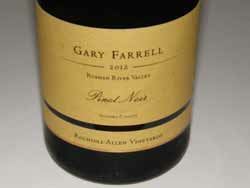 2012 Gary Farrell Rochioli-Allen Vineyards Russian River Valley Pinot Noir 14.2% alc., pH 3.56, TA 0.69, 317 cases, $70. Released September 2014. Sourced from Rochioli Vineyard and Allen Vineyard which lie opposite on Westside Road. Both vineyards are farmed by the Rochioli family. Clones are Pommard from the Allen Old (planted in 1974) and New (planted in 1996) North Hill blocks, with the balance consisting of Pommard from Rochioli River Block. 10% whole cluster. 5 to 7-day cold soak, 10 to 15-day extended maceration, aged on the primary lees 14 months in 40% new French oak. · Moderate reddish purple hue in the glass. Vibrant aromas of raspberry, black cherry, rose petal and baking spice are attention-grabbing. A vigorous mid palate attack of black raspberry and ollaliberry flavors is tenacious and palate soaking. There is a compliment of spice, earth, oak and savory herb notes in the background. Very smoothly textured with well-managed tannins, bright acidity, and a remarkable intensely fruited finish. Still fine the following day from a previously opened and re-corked bottle, with the grand cru finish still in evidence. This dreamy Pinot will age gracefully. Score: 93-94
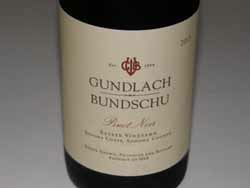 2012 Gundlach Bundschu Estate Vineyard Sonoma Coast Pinot Noir 14.4% alc., pH 3.87, TA 0.55, 3,958 cases, $37. Estate grown, produced and bottled on the Rhinefarm Estate Vineyard located just 8 miles north of San Pablo Bay. 8 distinct blocks of Pinot Noir were harvested separately. 20% heritage selections, 80% Dijon 667 and 777. 100% destemmed, optically sorted, 5 to 7-day cold soak, indigenous and RC212 yeast strains, aged 10 months in 40% new French oak. · Moderate reddish purple color in the glass. Very fresh aromas of red berries and red cherries with a hint of grassy meadow in the background. Palate-saturating flavors of black cherry, black raspberry and ripe strawberry on entry, finding every nook and cranny in the mouth, and ending with some suavity and length. The wine has a well-proportioned backbone of tannins and acidity creating the balance to age, but it is ready to enjoy now. Score: 92
2012 Ledson Anderson Valley Pinot Noir 14.5% alc., 230 cases, $60. Aged 20 months in 40% new French oak barrels. · Moderately light reddish purple color in the glass. Pleasing aromas of cherry, pennyroyal, rose petal and sandalwood. The mid weight core of juicy strawberry, cranberry and cherry fruits is framed by supple tannins creating an appealing elegance. Oak shows up with complimentary notes of mocha and caramel. There is plenty of Pinot Noir character in this delicately styled but flavorful wine. Score: 91
2012 Ledson Valerie’s Vineyard Carneros Pinot Noir 14.2% alc., pH 3.76, TA 0.51, 110 cases, $52. Aged 12 months in 35% new French oak. Released June 13, 2014. · Moderately light reddish purple color in the glass. Aromas of black cherry, wet loam and oak spice are echoed in the flavors. The robust fruit has a slight confected character. A firm tannic structure keeps the fruit in line. The wine exhibits the savoriness and earthiness common to Carneros Pinot Noir and I like it for its reflection of Carneros terroir. Score: 90
2012 Melville Estate Sta. Rita Hills Pinot Noir 14.0% alc., $36 (can be found discounted at retail). Released March 2014. 16 Pinot Noir clones. 40% whole cluster. 30 days skin and stem contact (7- day cold soak, 2+ weeks of fermentation and 1+ week of extended maceration). Aged sur lie in neutral French oak. · Moderately light reddish purple color in the glass. Appealing aromas of black raspberry, black peppercorn, spicy oak and old cask. Modest in weight with a good attack of darker berry and cherry fruits with accents of black tea, anise and savory herbs. A kiss of oak is complimentary. Nicely balanced with appealing elegance and up front appeal. Score: 90
2012 Olema Sonoma County Pinot Noir 13.2% alc., $20. From Amici Cellars. Olema means “coyote” in Miwok and honors the Miwok Americans who called Sonoma County home. · Moderate reddish purple color in the glass. Aromas of black cherry, spice and toast lead to middleweight flavors of black cherry, black raspberry, cola and spice. Good richness on the mid palate with some finishing intensity. Modest tannins and easy drinkability. Score: 88
2013 Picayune Cellars Sonoma Coast Pinot Noir 13.8% alc., 450 cases, $29. This wine is produced by Jennifer Roberts (married to Nathan Roberts from Arnot Roberts Winery) and Claire Weinkauf (married to Aron Weinkauf, the winemaker at Spottswoode Winery). The goal is to deliver exciting wines at a reasonable price point. Aged 8 months in neutral French oak. · Medium reddish purple color in the glass. Shy aromas of black cherry, blueberry and forest floor lead to a mid to fullbodied core of earthy black cherry, boysenberry and blackberry fruit flavors with a riff of herbs in the background. Robust, but bright due to an energetic cut of underlying acidity. The finish is fruity and tangy, urging another sip. Score: 90
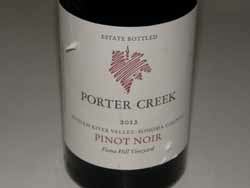 2012 Porter Creek Fiona Hill Vineyard Russian River Valley Pinot Noir 13.9% alc., $46. From a steep, hillside vineyard situated on Westside Road at the entrance to Porter Creek with a southern aspect. The hard clay top soil with fractured stone bedrock stresses the vines. Farming is Demeter Certified Biodynamic®. · Moderately light ruby red color in the glass. Charming aromas of red fruits, spice, herbs and sousbois. Impeccably balanced with discreetly concentrated flavors of cherry, strawberry and pomegranate accented with a note of savory herbs. Elegant with vibrant acidity and impressive length on the dried cherry finish. This is not your typical Russian River Valley Pinot Noir and would be easily mistaken for a Coté de Beaune Burgundy. A connoisseur’s wine. Score: 93
Owner Glenn Alexander farms and manages over 400 acres of premium vineyards for wineries such as Kosta Browne, Copain, Paul Hobbs and Pahlmeyer. Since 2006, the Alexander family has been producing wines from family farmed vineyards with Glenn as the winemaker. The name, Sanglier, is French for wild boar, a creature prevalent in the vineyards and on the dinner tables of France and Sonoma County. The winery has a tasting room is located in downtown Healdsburg. Visit www.sangliercellars.com. This is my first opportunity to sample Sanglier Cellars Pinot Noir and I was very impressed.
2012 Sanglier Russian River Valley Pinot Noir 14.3% alc., pH 3.58, TA 0.61, 542 cases, $38. Aged in French oak. · Moderate reddish purple color in the glass. Quintessential Russian River Valley character with aromas and flavors of Bing cherry, plum, cola and baking spice. Modest in weight, but plush on the palate, with welcome oak accents, smooth tannins, and a cherry-charged finish. This up front wine has typical lush Russian River Valley fruit, yet is fresh and vibrant. Score: 92
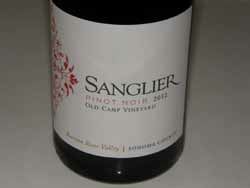 2012 Sanglier Old Camp Vineyard Russian River Valley Pinot Noir 14.7% alc., pH 3.71, TA 0.56, 49 cases, $45. The vineyard is just above the Russian River on the eastern ridge and enjoys slightly more brilliant sunshine than the valley below, but still has exposure to the Pacific fog that creeps into the Valley each summer night. Pommard and 667 clones. Aged in French oak. · Moderately dark reddish purple color in the glass. The nose is alive with scents of Bing cherries, cola and cinnamon spice. An evocative wine with a plush attack of black cherry and black raspberry fruits that alert the palate. Nicely spiced and showing a hint of oak, this wine delivers a generous charge of cherries jubilee on the expansive finish. Highly flavorful, even hedonistic, but not overweighted or sweet. Score: 94
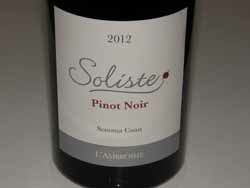 2012 Soliste L’Ambroisie Sonoma Coast Pinot Noir 13.5% alc., 60 cases, $100. Tasted from a bottle that was opened 2 days prior at a luncheon. Clone “828.” 12% whole cluster. · There is plenty of drama and personality to this wine. The nose is replete with engaging aromas of wild cherry, exotic spices, forest floor and fresh rose petals. Flavors of black cherry and spice dance on the palate, framed by elegant, suave tannins (surprisingly reserved considering the high percentage of whole cluster). A charming, silken wine with impressive fruit intensity and length on the spice-filled finish. Impeccable balance and freshness after opened for 2 days predicts longevity. Score: 92-94
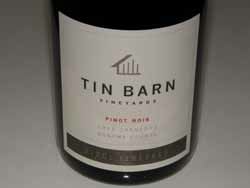 2012 Tin Barn Vineyards Ricci Vineyard Carneros Pinot Noir 13.5% alc., $36. Sourced from a family owned vineyard located in a cool and foggy setting facing San Pablo Bay. The winemaker is Michael Lancaster. · Moderately light reddish purple color in the glass. Aromatically alive with scents of red cherry, strawberry and red rose petal. A charming, polished and elegant wine with mid weight flavors of spiced cherry and plum. Easy to drink, with good tension, balanced tannins and a fruity finish. Score: 90
2010 Z’ivo Eola-Amity Hills Pinot Noir 13.4% alc., 796 cases, $36. 25% 115, 25% 777, 25% 114, 12.5% 667 and 12.5% Pommard. 5-day cold soak, aged in 25% new French oak. · Lighter reddish purple color in the glass. Aromas of mixed berries, black cherry, underbrush and woody resin. Middleweight flavors of black cherry, cola, tea leaf, and tobacco. Soft in the mouth with polished tannins and reasonable intensity on the finish. An oak streak stands out. Score: 87
Beerification of Pinot NoirOregon wine producer Union Wine Co., founded by winemaker Ryan Harms, launched Underwood Pinot Noir and Pinot Gris in 375 ml cans (equivalent to about a half bottle of wine) in mid-2014. The wines are the first non carbonated wines to be bottled in a can. A canned rosé is planned for early 2015. Why in the world would you want to bottle Pinot Noir, the Queen of Wines, in the lowly flip-top beer can? Union Wine Co. had two goals. First the can eliminates the pretentiousness associated with wine drinking, a philosophy with the tag, “#Pinkies Down,” displayed on the back of every can to urge drinkers to stop drinking wine with pinkies in the air. Second, the aim is to make wine more accessible. When you think about it, packaging wine in a can is not a crazy idea. Cans are very practical as they are portable and readily disposable. You don’t even need a wine stem. Now you can take a four-pack of Pinot Noir on your next hiking or camping trip. The cans are much lighter than bottles, easy to transport, unbreakable, and reduce the environmental footprint because they are recyclable. Since the can, manufactured by Bell, is lined, there is no unwelcome flavors and testers have verified that the wine tastes identical to the same wine packaged in a traditional 750 ml bottle. The public’s response has been very positive, with about 7,000 cases of wine canned this year and everything sold or pre-sold. The canned wines are widely distributed and can also be bought online at www.unionwinecompany.com. A four-pack of Pinot Noir is $24.99. Union Wine Co. produced about 110, 000 cases of wine in 2013, including the winery’s own brands of Kings Ridge, Alchemist and Underwood, as well as other brands at its winery facility in an industrial complex in Tualatin. Coinciding with the International Pinot Noir Celebration this year held in August, Union Wine Co. rolled out a new mobile wine tasting truck on the streets of downtown Portland where food carts are a way of life for the community. The innovative Harms repurposed a vintage 1972 Citroën H Van.
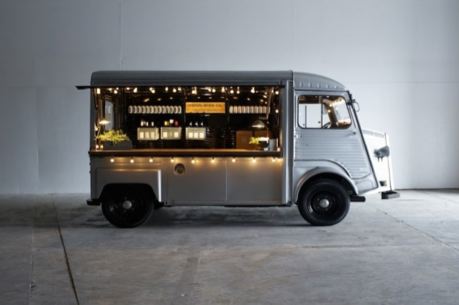 I recently tasted the Underwood Pinot Noir and Pinot Gris from a 375 ml can (no vintage is stated on the can but I assume it is 2013 from press reports), and the 2013 Underwood Pinot Noir from a 750 ml bottle. Union Wine Co. states that the Pinot Noir is identical and tastes the same, but I did not find that to be the case. I also preferred the Pinot Gris over the Pinot Noir from a can.
NV Underwood Oregon Grown Pinot Gris 13.0% alc., 375 ml can, $6. · Pale yellow color and clear in the glass. Attractive aromas of pineapple, peach, papaya and a hint of juniper. The flavor profile is typical for Pinot Gris with tastes of white peach, pear, lemon and apple with a hint of nuttiness. The wine has good balance and acidity, held up well in the glass over time, and finished with a refreshing acidic tang. Score: 88
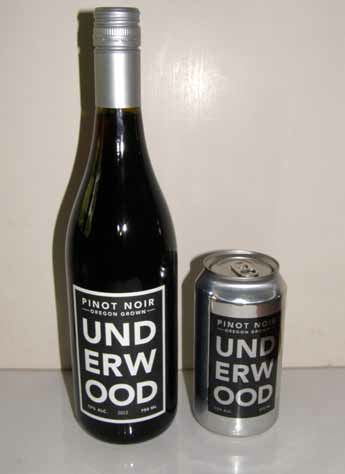
NV Underwood Oregon Grown Pinot Noir 13.0% alc., 375 ml can, $6. · Moderately light reddish purple color in the glass. Highly aromatic upon opening with scents of cherry, raspberry and spice, but fading some over time in the glass with oak showing up. Soft in the mouth and easy to drink with delicate flavors of cherry, raspberry, cola and toast. A bit thin on the mid palate and short on the finish. An everyday, unpretentious style that achieves the producer’s goal. Score: 86
2013 Underwood Oregon Grown Pinot Noir 13.0% alc., 750 ml bottle, screwcap, $12. · Moderately light reddish purple color and a tad darker than the wine from a can. Not as aromatic initially as the canned Pinot Noir, but picks up interest and intensity over time in the glass to surpass the canned version with scents of Bing cherry, mocha and baking spice. Light to mid weight cherry-driven flavor with a hint of oak in the background. Elegant, with supple tannins and easy quaff ability. A bit shallow from attack to finish, but slightly more flavor and verve than the canned version. A simple wine that would enhance grilled salmon. Score: 87
Recent Sips of ChardonnayThere are not many Chardonnays to review this go around, but the quality is very high for most wines.
2012 Gary Farrell Bacigalupi Vineyard Russian River Valley Chardonnay 14.0$ alc., pH 3.45, TA 0.58, 482 cases, $45. Released September 2014. Harvest Brix 22.5º. Whole cluster pressed, inoculated with Montrachet yeast, transferred to 40% new French oak barrels for fermentation and 8 months of barrel aging. Barrels included standard size and 500-L puncheons. The wines were racked off the primary lees once just before bottling. · Light golden yellow color and clear in the glass. Enticing aromas arrive over time in the glass, revealing notes of lemon creme, yellow apple, nuts and vanilla malt. Very flavorful with noticeable brightness, offering flavors of yellow stone fruits, lemon, grapefruit, and struck match flint. The oak is nicely integrated, the texture is slightly creamy, and the bright acidity brings the wine to life. An appealing food wine. Score: 91
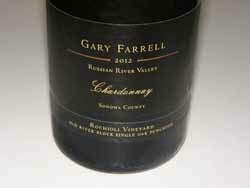 13.4% alc., pH 3.26, TA 0.77, 44 cases, $60. Released September 2014. This limited production wine comes from Rochioli River Block, clone 5, planted in 1989. Harvest Brix 22.5º. Vinified in a new 500-L French oak puncheon. A puncheon adds subtle structure and aromatics, and polishes the finished wine without dominating its expression of terroir. Because this wine had such an exotic aromatic profile of the finished wine, it was decided to bottle it by itself under the winery’s special Inspiration Series, designated by a black label. The wine was racked off primary lees once before bottling. · Light golden yellow color and clear in the glass. Slightly reduced upon opening. The nose is slow to open, taking upwards of 45 minutes to satisfy with aromas of lemon, apple, Nutella, and toasty oak. Tight initially, the wine gradually reveals its charms which are substantial. There is a citrus-driven attack and finish with a grapefruit peel, steely character to the brisk, electric finish. Slightly creamy in texture with nuances of white peach, peach pit, vanilla and spice showing up. A contemplative wine that should benefit from further cellaring. The “exotic” aromas that were experienced in barrel have not yet reappeared in the wine. This is a distinctive offering that veers from many popular Russian River Valley Chardonnays that are harvested later and display a typical lush tropical fruit core and noticeable buttery oak imprint. Score: 91-93
2012 Anaba Sonoma Coast Chardonnay 13.9% alc., pH 3.43, TA 0.60, 790 cases, $28. Sourced from estate McK, Denmark, and Dutton Ranch vineyards. Clones are Wente and Dijon 95. Harvest Brix 22.8-23.9º. Whole cluster pressed, 60% barrel fermented, 40% stainless steel fermented, aged 11 months sur lees in 45% new French oak. · Light golden yellow color and clear in the glass. Aromas of lemon curd, pastry cream, croissant and nutty oak. A solid wine with a flavorful core of citrus, peach, pear and honey. Silky on the palate with an uplifting cut of acidity on the finish. Score: 89
2012 Anaba Dutton Ranch Russian River Valley Chardonnay 13.9% alc., pH 3.51, TA 0.66, 248 cases, $36. Sourced from Dutton Ranch Mills Station and Dutton House Block vineyards in the Green Valley of Russian River Valley AVA. Harvest Brix 23.5º. Whole cluster pressed, 100% barrel fermented. Aged 11 months sur lees in 48% new French oak. · Light golden yellow color and clear in the glass. Very stylish throughout with aromas of lemon, golden apple, white flowers and toast and vivid, full-bodied flavors of lemon creme, apple, pear and vanilla. The slightly creamy mouthfeel is appealing, as is the complimentary touch of oak which adds depth and interest. Score: 92
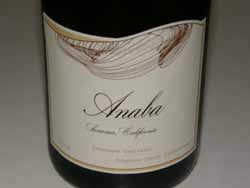 2012 Anaba Denmark Vineyard Sonoma Coast Chardonnay 13.9% alc., pH 3.45, TA 0.59, 216 cases, $34. This vineyard is in the southeastern foothills of the Sonoma Coast AVA. The soils are rich with minerals. Wente clone. Harvest Brix 23.5º. Whole cluster pressed, cold settled for 2 days, 60% fermented in stainless vats, 40% in neutral French oak barrels. 40% of the wine went through malolactic fermentation. Aged sur lees for 11 months in 12% new French oak. · Light golden yellow color and clear in the glass. This was a striking way in every way. Aromas of lemon curd, butter brickle, poached pear and apple draw you into the glass. Delicious flavors of citrus, Granny Smith apple, peach and pear with a slight buttery tone. Very harmonious and bright, with perfectly engaged acidity. There is some stony minerality in this wine for want of a better description. The finish is silky and pleasing with a lasting impression of lemon creme. This wine reminds me of a very fine Meursault. Score: 94
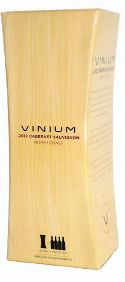 2013 Vinium Russian River Valley Chardonnay 13.7% alc., $35. Vinium™ is an innovative, eco-senstiive, alternative packaging of wine that keeps wine fresh for up to 6 weeks after opening. Founded by industry veterans Richard Cardoza, Richard Catania and winemaker George Bursick, the wines are available through retail partner Whole Foods Market or direct to your door. The wines are available in a 3.0 L cardboard box holding roughly the equivalent of 4 regular 750 ml bottles or 20 glasses of wine, and priced at the cost of two bottles. The packaging replaces bottles, labels, capsules and corks reducing the carbon footprint and landfill waste by up to 8.5%. The package is BPA free and 100% recyclable. · Pale yellow and clear in the glass. The nose is fruit shy with only a hint of lemon and is dominated by oak-driven notes of roasted nuts and dark caramel. Soft, lush and slightly creamy on the palate, yet crisp on the finish with delicate flavors of citrus, apple, banana, roasted marshmallow and toasted oak. The internal bag does preserve the wine which tasted the same at 1 and 2 weeks after opening. This wine is said to be one of the better box wines, but I cannot make that claim since I do not taste box wines usually. What I can say is that regardless of how eco friendly and convenient the packaging is, the wine inside needs to deliver its producer’s claim of “ultrapremium” quality and the fact is, it just isn’t very good. Score: 85
Comparative Wine Scores RevealedI occasionally look at the scores given to Pinot Noir by major wine publications to see how they compare with my scoring. I finding tasting to be a very personal experience that is often difficult to quantify by a number not surprisingly, a number of discrepancies show up. With so many variable involved, it is surprising how often the scores agree. Jamie Goode in The Science of Wine points out that scoring wine as it is currently practiced is based on the false premise that when critics rate a wine, the score is a property of the wine. Not so, he says, rather, “We need to make the subtle yet important paradigm shift of seeing a critic’s assessment as a rating of that critic’s perception of the wine. The critics are actually describing a conscious representation of their interaction with the wine, and therefore the score or rating is a property of that interaction, not of the wine itself.” Goode goes on to point out that trained tasters experience wine differently and that is the crux of the matter whether you consider the score a property of the wine or the taster. The most significant sources of Pinot Noir reviews are the following: The PinotFile, Wine Spectator, The Wine Advocate, The Pinot Report, Wine & Spirits, Vinous - Antonio Galloni, Wine Enthusiast, Connoisseur’s Guide, International Wine Cellar - Steve Tanzer, and Burghound - Allen Meadows. I looked at a random sampling of Pinot Noirs ( and a few Chardonnays) tasted over the past year or so and compared my scores with those from the Wine Spectator, Wine Enthusiast, Wine & Spirits (W&S), and International Wine Cellar (IWC). Some wines were not reviewed by all publications. Here are the results:
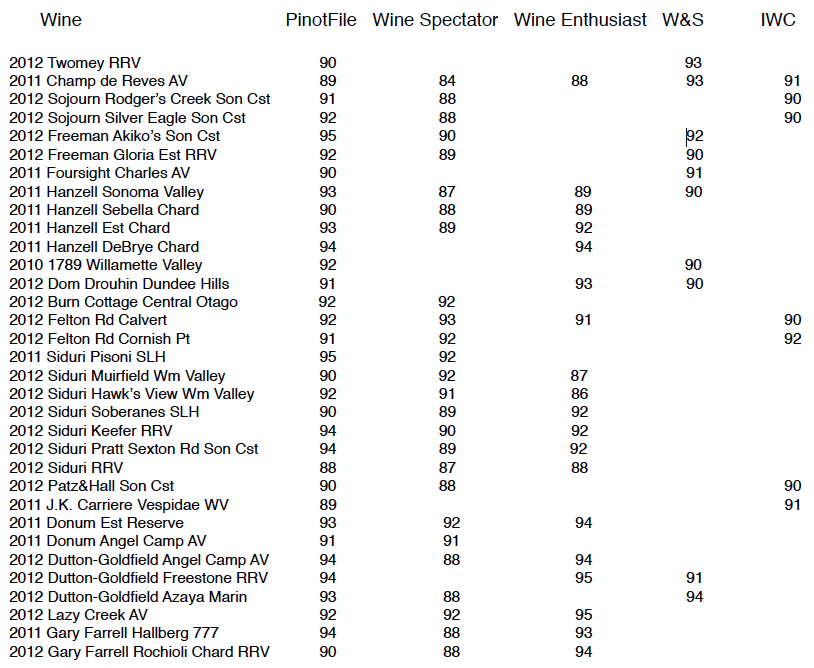
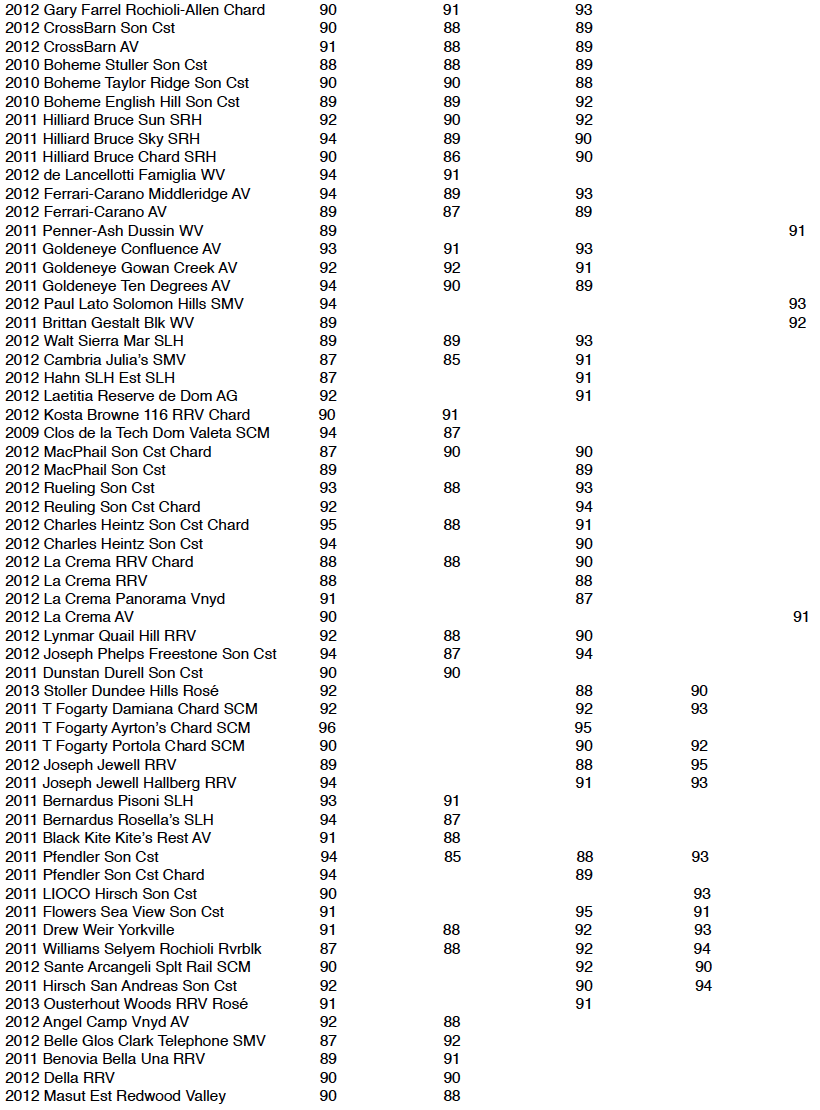 What did I learn?
1. Scores can vary widely for some wines and consistent for others. For example, the 2011 Pfendler Sonoma Coast Pinot
Noir had wildly discordant scores that included 85 (WS), 88 (WE), 93 (W&S), and 94 (PinotFile). Scores on the 2011
Williams Selyem Rochioli Riverblock Russian River Valley Pinot Noir were also high variable: 87 (PinotFile), 88 (WS),
92 (WE) and 94 (W&S). On the other hand, the 2012 Felton Road Calvert Central Otago Pinot Noir had more
consistent scores of 93 (WS), 91 (WE), 90 (IWC), and 92 (PinotFile). So did the 2012 Siduri Russian River Valley Pinot
Noir with scores of 88 (PinotFile), 87 (WS) and 88 (WE).
Orange Coast Magazine Presents West of West Orange CountyThe first significant regional wine tasting festival will be held at the Honda Grand Terrace Event Center in Anaheim, CA, on Saturday, November 8, 2014, from 10:00 am to 2:00 pm. Sponsored by Orange Coast Magazine and West Sonoma Coast Vintners, this will be a look at the newest trend in wine tasting festivals.
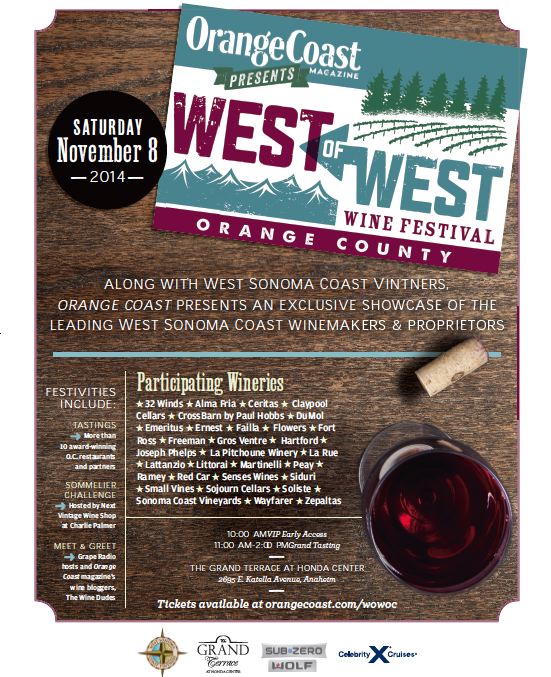 West Sonoma County Vintners hold their annual West of West Festival in Sebastopol in early August, but recently have begun taking the event on the road. This year’s Pinot-charged festival will also have participating restaurants such as Charlie Palmer at Bloomingdale’s, The Winery, and Wineworks for Everyone, offering gourmet bites to compliment West Sonoma County Pinot Noir. In addition, there will be a Sommelier Challenge, a Meet & Greet with Orange Coast Magazine’s bloggers, The Wine Dudes, Rusty Gaffney and Eric Anderson. The festivities also include entertainment, and lounges sponsored by Sub-Zero and Celebrity Cruises. The list of participating wineries includes some of California’s most esteemed producers including DuMOL, Failla, Flowers, Freeman, Joseph Phelps Freestone, Littorai, Martinelli, Peay, Red Car, Siduri and Soliste. Many of these wineries rarely pour their very limited production wines for the public. And, what an opportunity to taste the wines from very small, boutique producers who are well-known among the Pinot Geek community such as 32 Winds, Alma Fria, Ceritas, Claypool Cellars, Ernest, Gros Ventre, Pitchoune, LaRue, Senses, Small Vines, Wayfarer and Zepaltas. I have reviewed the wines from almost all these special vintners, and can tell you that this is a very unique tasting opportunity, especially for the Orange County community of wine enthusiasts. Ted Lemon, proprietor and winemaker for Littorai, said it best. “There (West Sonoma Coast) is no place I have ever heard of like it. The coast is a laboratory for place-specific winemaking.” For tickets, visit www.orangecoast.com/wowoc. PinotFile readers use code WOWFRFAM for a $99 discount on tickets. I look forward to sharing great Pinot Noir with PinotFile readers at West of West Orange County.
Pinot BriefsNew Book on ‘Original Grand Crus’ of Burgundy Written by Charles Curtis MW, the Original Grand Crus of Burgundy, examines Burgundy in the 18th and 19th centuries and how its wines and vineyards were viewed before the start of the AOC system in 1936 and how those views compared with the modern system of classification. It includes translations of works by experienced wine writers as well as knowledgeable amateurs such as Les Grands Vins de Bourgogne by René Danguy and Charles Aubertin. The book is directed at Burgundy enthusiasts and collectors as well as French history buffs. The book will be available in both paperback and e-book on Amazon by November 1, 2014. Alder Yarrow Publishes His First Book Alder Yarrow is one of most widely read wine bloggers on the internet and his site, Vinography, has won multiple awards. His new book, The Essence of Wine, funded by Kickstarter, will be released in October. This 150-page hardcover art book features beautiful photographs that celebrates 47 individual flavors and aromas of wine and a short essay along with wine recommendations that feature that particular flavor or aroma. In addition, Yarrow includes wine essays and wine recommendations so it more than a picture book. The book has many publication upgrades including custom coloring, very high quality photo paper, textured end pages, and a 4-color dust jacket. Understandably, the cost will be moderately high, around $80, but can be pre-ordered for $70. An e-book version ($30) will also be available but that looses much of the essence of the paper book. Visit www.kickstarter.com/projects/ 209816791/the-essence-of-wine-book-project.
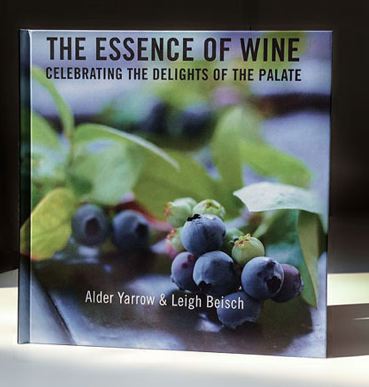 ‘Sideways’ Crew Reunited on 10th Anniversary In early August of this year, to celebrate the film’s 10th anniversary, Frank Ostini, Jim Clendenen and others organized a reunion for the film’s cast and crew including screenwriter Alexander Payne, producer Michael London, and actors Paul Giamatti and Virginia Madsen. The Santa Maria Sun reported that an entire weekend of events transpired planned around an August 2 dinner and an auction that raised $100,000 for Direct Relief, the nonprofit that delivers humanitarian medical aid around the world. On Aug 1, Jim Clendenen’s hilltop Rancho la Cuna in Los Alamos was the site of the cast reunion barbecue featuring ‘Sideways’ era (2001-2005) Hitching Post and Au Bon Climat Pinot Noir. Jackson Family Wines Launches West Burgundy Wine Group West Burgundy Wine Group, based at the company’s Carneros Hills Winery (the former Buena Vista winery), will be a division of Jackson Family Wines devoted to ultrapremium Pinot Noir and Chardonnay from select estates. The portfolio currently includes Champ de Rêves (Anderson Valley Pinot Noir property), Wild Ridge (Sonoma Coast Pinot Noir property), Chardonet (single-vineyard Sonoma Coast Chardonnay), and Gran Moraine (Pinot Noir from the Gran Moraine Vineyard in the Yamhill-Carlton AVA of the Willamette Valley). Also, the West Burgundy Wine Group will be the importer for negociant Moillard-Grivot which offers a number of wines from the Côte d’Or. SRHWA On The Road Again The vintners of the Sta. Rita Hills Winegrowers Alliance (SRHWA) will be heading south to San Diego on November 21 and 22 for the San Diego Bay Wine + Food Festival. SRHWA members will be pouring at tables at the Friday night Reserve Tasting and the Saturday Grand Tasting. For information visit www.sandiegowineclassic.com or www.staritahills.com. Members of SRHWA will also be participating in the Santa Barbara County Vintners Celebration of Harvest October 10-13. Fort Ross-Seaview Wine Festival This annual event will be held for the second time on Saturday, October 18, from 12:00 to 4:00, at Fort Ross State Historic Park in Jenner. A Grand Tasting and Grand Luncheon are planned. Participating wineries include Del Dotto’s Ca’Nani Winery, Flowers Vineyard & Winery, Fort Ross Vineyard & Winery, Kutch Wines, Martinelli Winery, Pahlmeyer’s Wayfarer Vineyard, Siduri Wines, Tin Barn, WesMar Winery, Wild Hog Vineyard and Williams Selyem.
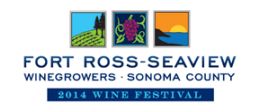 ¡Salud! Oregon Wine Auction The premier Oregon Pinot Noir Auction will be held November 14-15, 2014. Winemakers will debut the 2013 vintage at this benefit for Oregon’s seasonal vineyard workers and their families. This event is the only opportunity to acquire unique cuvées made exclusively for ¡Salud! and to gain direct access to the winemakers. The Cuvée Tasting and Big Board Auction will be held Friday, November 14 at Domaine Drouhin Oregon in the Dundee Hills. The Dinner and Auction Gala will be the following night at The Allison Inn & Spa in Newperg. Once again, I will be donating a 4-day Russian River Valley Immersion Trip for 4 people. The trip will be personally escorted by me, and include lodging at the Benovia Winery Vineyard Cottage, private tours, tastings and lunches at popular Russian River Valley wineries as well as dinners in the region’s most notable restaurants. Visit www.saludauction.org for information and tickets.
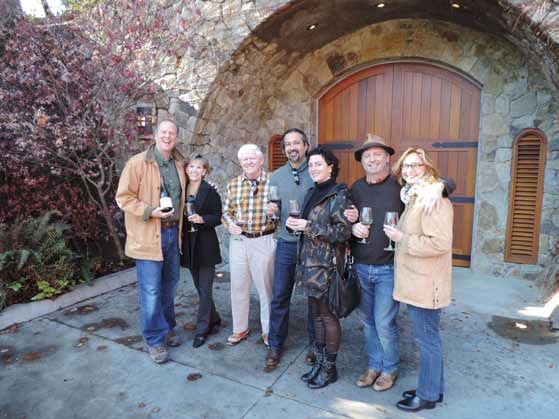 Dundee Bistro Celebrates 15 Years The Dundee Bistro, owned by the Ponzi wine family, observes its 15th anniversary on October 30. The restaurant offers fireside dining in the winter and courtyard seating in the warmer months. The wine list has been honored by both Wine Spectator and Wine Enthusiast. A celebration will be held at the restaurant on October 30 from 4:00 to 6:00 and new inductees into the Oregon Wine Walk of Fame will be inducted. Those interested in attending the celebration must RSVP to Laurel Carroll at 503-628-1227 or laurel@ponziwines.com.
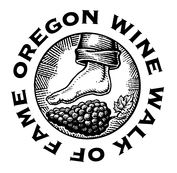 HillCrest Winery & Distillery Honored On September 16, 2014, an official Oregon Historical Marker was placed at the HillCrest Winery located in Roseburg in the Umpqua Valley and a roadside ceremony was held. The plaque is a tribute to Richard Sommer and HillCrest, the site of the first post-Prohibition planting of Pinot Noir in Oregon in 1961. Read more about Richard Sommer and HillCrest’s current owner Dyson DeMara at www.princeofpinot.com/article/1091/.
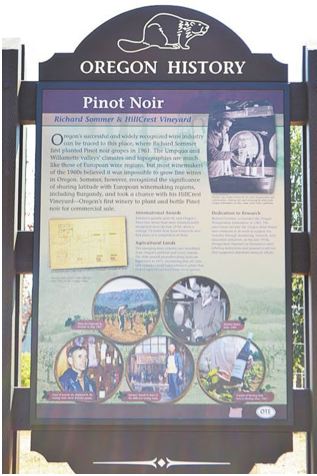 2014 Sunset International Wine Competition More than 50 judges reviewed nearly 3,000 wines on April 28-29, 2014. Each judge tackled about 100 wines a day, something I could never do, so keep that in mind when looking at the medal winners. Best in 2010 Pinot Noir Class: 2010 Trione River Road Ranch Russian River Valley Pinot Noir 9$37). Gold Medals in 2010 Pinot Noir Class: 2010 Chalone Vineyard Estate Grown Chalone Pinot Noir ($40), 2010 Clos Pegase Mitsuko’s Vineyard Carneros Pinot Noir ($35), 2010 Renteria Russian River Valley Pinot Noir, and 2010 Talisman Adastra Vineyard Carneros Pinot Noir ($55). Best in 2011 Pinot Noir Class: 2011 Sanctuary Bien Nacido Vineyard Santa Maria Valley Pinot Noir ($30). Best in Pinot Noir Class: 2012-2013: 2012 Stephen Ross Santa Lucia Highlands Pinot Noir ($25). Gold Medals in 2012-2013 Pinot Noir Class: 2012 Acacia Carneros Pinot Noir ($28), 2012 Artesa Estate Reserve Carneros Pinot Noir ($40), 2012 Benziger Family Appellation Series Sonoma Coast Pinot Noir ($29), 2012 Black Stallion Los Carneros Pinot Noir ($28), 2012 DeLoach Russian River Valley Pinot Noir ($24), 2012 Dutton-Goldfield Emerald Ridge Vineyard Green Valley of Russian River Valley Pinot Noir ($58), 2012 Francis Ford Coppola Director’s Cut Russian River Valley Pinot Noir ($27), 2012 Huge Bear Russian River Valley Pinot Noir ($45), 2012 Irony Small Lot Reserve Monterey Pinot Noir ($16), 2012 MacMurray Ranch Central Coast Pinot Noir ($18), 2012 MacMurray Ranch Russian River Valley Pinot Noir ($28), 2012 MacMurray Ranch Santa Lucia Highlands Pinot Noir ($35), 2012 Patz & Hall Sonoma Coast Pinot Noir ($46), 2012 Primarius Oregon Pinot Noir ($16), 2012 Red Car Platt Vineyard Sonoma Coast Pinot Noir ($68), 2012 Roblar Gold Collection Sta. Rita Hills Pinot Noir ($50), 2012 Schug Carneros Pinot Noir ($30), 2012 Sonoma Hills Russian River Valley Pinot Noir ($23), 2012 Sonoma-Cutrer Russian River Valley Pinot Noir ($34), 2012 Stemmler Estate Vineyard Carneros Pinot Noir ($44), 2012 Winside Vineyard Russian River Valley Pinot Noir ($44), 2012 Taft Street Russian River Valley Pinot Noir ($24), 2012 Talley Arroyo Grande Pinot Noir ($36), 2012 V. Sattui Anderson Valley Pinot Noir ($38) and 2012 Willamette Valley Vineyards Bernau Block Willamette Valley Pinot Noir ($55). The latter category is quite a mixed bag and seems like a generous number of Gold Medals. View all the results at www.sunset.com/2014medals. 2014 San Francisco International Wine Competition The 34th Annual San Francisco Wine Competition took place on June 20,21 and 22, 2014. 4,570 wines were entered from 26 states and 31 countries. 58 judges from many backgrounds in the wine and food industry were divided into panels and judged the wines over three days. Double Gold Medals were awarded when all members of the panel agreed that the product deserved a Gold Medal. The Tasting Panel will hold a Double Gold Tour which will feature trade tastings of many of the Double Gold winners. Best Pinot Noir: 2012 Lost Canyon Winery Whitton Vineyard Russian River Valley Pinot Noir. Double Gold Medals for Pinot Noir: 2012 AAlma rosa Winery & Vineyards Certified Organic La Encantada Vineyard Sta. Rita Hills Pinot Noir ($45), 2011 Amisfield Estate Blocks 2,3,4,5,6,7 Pisa Range Central Otago New Zealand Pinot Noir ($40), 2013 Babich Wines Marlborough New Zealand Pinot Noir ($20), 2012 Bird Single Vineyard Marlborough New Zealand Pinot Noir ($30), 2012 Blue Cape Cellars Sta. Rita Hills Pinot Noir ($32), 2012 Castle Rock Winery California Cuvee ($11), 2012 Davis Family Vineyards Campbell Ranch Sonoma Coast Pinot Noir ($50), 2013 De Bortoli Wines Estate Yarra Valley Victoria Australia Pinot Noir ($32), 2012 Fog Crest Vineyard Estate Sonoma County Pinot Noir ($55), 2012 Francis Ford Coppola Winery Diamond Collection Silver Label Monterey County Pinot Noir ($18), 2012 Furthermore Rosella’s Vineyard Santa Lucia Highlands Pinot Noir ($50), 2012 Garnet Monterey County Pinot Noir ($15), 2012 Layer Cake Central Coast Pinot Noir ($16), 2012 Lost Canyon Winery Whitton Vineyard Russian River Valley Pinot Noir ($45), 2012 Menage a Trois Napa County Pinot Noir ($14), 2012 Rodney Strong Vineyards Estate Vineyards Russian River Valley Pinot Noir ($25), 2012 Sonoma Hills Russian River Valley Pinot Noir ($25), 2012 Soquel Vineyards Partner’s Reserve Santa Cruz Mountains Pinot Noir ($35), 2013 Squealing Pig Central Otago New Zealand Pinot Noir ($33), and 2012 V. Sattui Winery Anderson Valley Pinot Noir ($35). Petaluma Gap AVA Fund The Petaluma Gap Winegrowers Alliance (PGWA) is asking the public to help establish the Petaluma Gap AVA through gofundme at www.gofundme.com/petalumagap. The group of dedicated local farmers and winemakers are trying to gain recognition for these wines and raise the visibility of the region to tourists. They hope that Petaluma becomes known as a wine country destination, rather than a place to pass through on the way to the Russian River Valley, Carneros and Napa Valley. The TTB recently disallowed the term “Petaluma Gap” anywhere on wine labels because they consider the Petaluma Gap to be “viticulturally significant.” Achieving an AVA status will allow vintners to label their wines as Petaluma Gap. Considerable financial support is required to prepare an AVA petition and navigate the TTB review process, so the PGWA has launched a fundraising campaign to cover these expenses. The Petaluma Gap has more than 80 vineyards covering 4,000 acres, known for Pinot Noir, Chardonnay and Syrah. Every growing season the vines in the region are engulfed by heavy morning fog and battered by afternoon winds which produces wines best described as “elegant with a touch of wild.” A draft of the proposed Petaluma Gap AVA is shown on the map below.
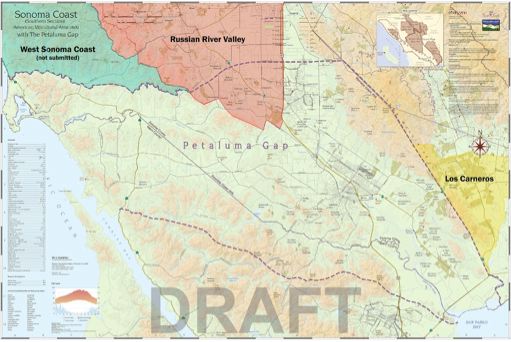
The Science of Wine Book Review
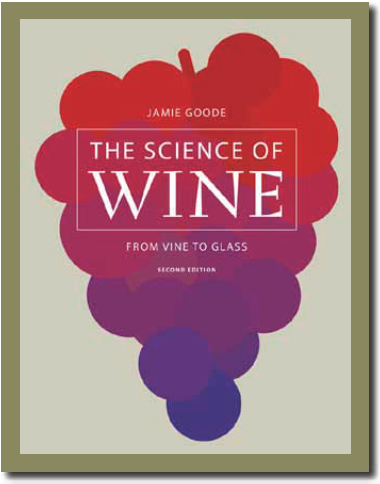 The second edition of this classic book has be out since April 2014 and surpasses the first edition with new chapters on regulated deficit irrigation, red winemaking techniques including whole cluster fermentation, and the science of wine tasting. Goode points out in Chapter 15 that addresses reduction, “the subject is a horrendously technical one.” Therein lies the challenge of writing a book on the science of wine. He clearly states his chapter goal in the next sentence, but this could easily be the overall theme of the book. “My goal will be to make this rather technical subject understandable to non experts, while at the same time not being scared of the hardcore wine chemistry where it is necessary for the story.” I consider this book my wine bible and refer to it more than any other on my shelf. I can’t tell you how many yellow Sharpies I have worn out in reading and rereading this book, because the text is crammed with important ideas and succinct explanations of some of the currently debated methods of modern viticulture and vinification. There is simply no other up-to-date reference that can compare. Goode is currently a UK-based wine columnist who contributes to several well-known wine publications. His blog, “The Wine Anorak” at www.wineanorak.com/blog/, has been online since 2001 and has been voted the “Best Overall Wine Blog” two years in a row. An additional reference, Wine Science Extra, has just be published by Jamie Goode. This e-book ($9 Kindle Edition) is a collection of chapters covering interesting topics in wine science that could not be included in the book. Consider it a supplement with five updated chapters that were dropped from the new edition and a final new chapter. The Science of Wine: From Vine to Glass, University of California Press, hardback, 216 pages, $27.54. |